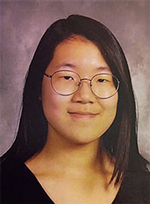
Sua Shin/ N. Hollywood HGM Grade: 10
Gender equality is one of the world’s most discussed topics when it comes to human rights and freedom. The majority of the voices are from women who believe that they can practice the same rights and be treated equally as men without prejudices. Countless arguments bring up the physical abuses from men, especially the worst cases such as rape, sexual assault, and sex trafficking. Some cities try to support these victims by installing public sculptures that represent survivors with similar experiences, such as the comfort women. Recently, San Francisco has established a Comfort Women Memorial in the thought of them regardless of a distinctly close city’s threats.
The San Francisco Comfort Women Memorial, also known as the Column of Strength, was stalled in San Francisco in 2017. It was created by Sculptor Steven Whyte, dedicated to the “comfort women” who were coerced into sexual slavery by the Imperial Japanese Army before and during World War II. This was the first sculpture placed in a major U.S. city to commemorate the comfort women. It is located near Saint Mary’s Square in San Francisco’s Chinatown.
The memorial statue is made of bronze and stands around 10-feet tall. It portrays three young women on a pedestal-one each from China, Korea, and the Philippines-standing in a circle, holding hands. Another bronze figure stands next to the pedestal and looks up at the statue of the girls: an older woman who represents the first comfort woman to testify about her experiences, the Korean activist Kim Hak-Sun.
The installation of the statue was pushed by Chinese-American activists and was privately funded by the Comfort Women Justice Coalition in 2015. By September 2017, the total amount raised by the organization was $205,000 to establish the statue. British-American artist Steven Whyte was tasked with sculpting the memorial piece.
During the design process, the sensitivity of the controversial issue was taken into consideration and the statue was designed not to display any violence or brutality. The memorial statue was given the name Women’s Column of Strength and represents the young girls and women taken from China, Korea, and the Philippines, as well as to bring awareness to the sex trafficking of women during wartime.
In 2017, the mayor of Osaka, Japan, Hirofumi Yoshimura, protested the placement of the memorial statue and threatened to end the sisterhood between the two cities of Osaka and San Francisco, established in 1957. The Japanese government wishes to put the controversial issue behind them and claims that San Francisco’s placement of the statue broke the relationship of trust between them. Yoshimura argued the memorial was unnecessary because Japan has already made amends regarding the issue of comfort women.
The installation of the San Francisco statue worried many Japanese-Americans, who felt it stigmatized the community and offered only a one-sided account to the comfort women story. Julie Tang, a retired California judge and current chairman of the Comfort Women Justice Coalition, refuted this claim by stating the memorial statue tackles the issue of women’s freedom from sexual violence, such as through rape and assault during wartime. Although it may catch the Japanese government’s eyes, San Francisco representing their interest in a devastating incident through commemorating with a statue can support today’s victims. This statue will be another clear reminder that no one is alone facing the worst situations.
<
Sua Shin/ N. Hollywood HGM Grade: 10>

